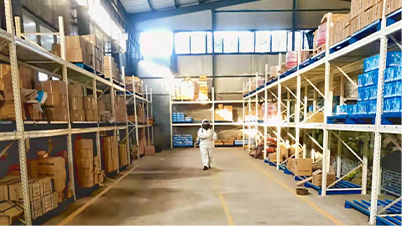gantry crane system
Gantry Crane Systems Enhancing Efficiency in Material Handling
Gantry crane systems have become a pivotal component in various industrial applications, transforming the way materials are handled and moved in workplaces. These cranes are characterized by their distinctive bridge-like structure that spans between two or more supporting legs. They are designed to lift and transport heavy loads with great efficiency and precision, making them ideal for factories, warehouses, shipyards, and construction sites.
Design and Components of Gantry Cranes
A typical gantry crane consists of several key components the bridge, the legs, the hoist, and the trolley. The bridge is the horizontal beam that spans the width of the work area and serves as the main structural element. It is supported by legs that are mounted on wheels or tracks, allowing the crane to move along a designated path. The hoist, an essential element of the crane, is the mechanism responsible for lifting and lowering loads. The trolley moves along the bridge, enabling the hoist to traverse the span, thereby facilitating the lateral movement of materials.
Gantry cranes can be classified into two main types full gantry cranes and semi-gantry cranes. Full gantry cranes have two legs and move along a track, providing maximum mobility and stability. Semi-gantry cranes, on the other hand, have one leg that runs on a track while the other end is supported by a fixed structure, such as a building wall. This design is particularly useful in scenarios where space is limited.
Applications and Benefits
The versatility of gantry cranes allows them to be utilized in a wide range of applications. In manufacturing facilities, they are commonly used to move heavy machinery, assembly parts, and production materials. In shipping and logistics, gantry cranes are invaluable for loading and unloading containers from ships, trucks, and trains. Additionally, in construction sites, they facilitate lifting concrete panels, steel beams, and other heavy materials, enhancing project efficiency and safety.
One of the most significant benefits of gantry cranes is their ability to optimize workflow. By allowing for quick and efficient movement of materials, these cranes minimize downtime and increase productivity. Their operational flexibility also enables workers to handle heavy loads with ease, reducing the risk of workplace injuries. Furthermore, gantry cranes can be powered by electric, hydraulic, or pneumatic systems, catering to different operational requirements and environments.
gantry crane system

Safety Features and Considerations
Safety is paramount when operating gantry crane systems. Modern cranes are equipped with a variety of safety features designed to protect both the operator and the materials being handled. These features may include overload sensors, emergency stop buttons, limit switches, and anti-collision systems. Regular maintenance and inspections are also critical to ensuring the crane's safe operation and longevity. Training operators to adhere to safety protocols and proper usage guidelines is essential in minimizing accidents and ensuring efficient operations.
Technological Advancements
With the rapid advancements in technology, gantry crane systems are evolving to incorporate innovative features that enhance their functionality. Automation, for instance, is becoming increasingly prevalent in material handling equipment. Automated gantry cranes can operate with minimal human intervention, utilizing sensors and software to execute complex tasks with precision. This not only improves efficiency but also reduces the likelihood of human error.
Additionally, the integration of industry 4.0 technologies, such as the Internet of Things (IoT), allows for real-time data monitoring and analysis. Operators can track the performance of gantry cranes remotely, facilitating proactive maintenance and operational adjustments. This data-driven approach empowers businesses to make informed decisions, ultimately leading to increased productivity and reduced operational costs.
Conclusion
In conclusion, gantry crane systems play a crucial role in modern material handling across various industries. Their robust design, operational efficiency, and versatility make them indispensable tools for moving heavy loads. With ongoing technological advancements and a strong emphasis on safety, gantry cranes are poised to continue enhancing productivity and efficiency in workplaces for years to come. As industries evolve, so too will the capabilities of gantry crane systems, ensuring they remain at the forefront of material handling solutions.
-
Unlock Seamless Relocation with Our Heavy Equipment Moving ExpertiseNewsJun.06,2025
-
Unleash Unrivaled Flexibility with Our Adjustable Gantry CraneNewsJun.06,2025
-
Unleash Heavy-Duty Efficiency with Our Industrial Gantry Crane SolutionsNewsJun.06,2025
-
Revolutionize Steel Handling with Our Magnetic Lifter RangeNewsJun.06,2025
-
Master Equipment Mobility with Premium Machinery Mover SolutionsNewsJun.06,2025
-
Elevate Your Material Handling with Magnetic Lifter TechnologyNewsJun.06,2025
-
YS Permanent Lifting Magnets: The Smarter Way to Handle SteelNewsMay.22,2025
